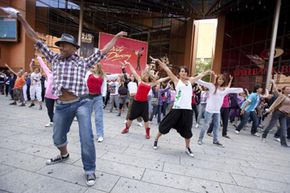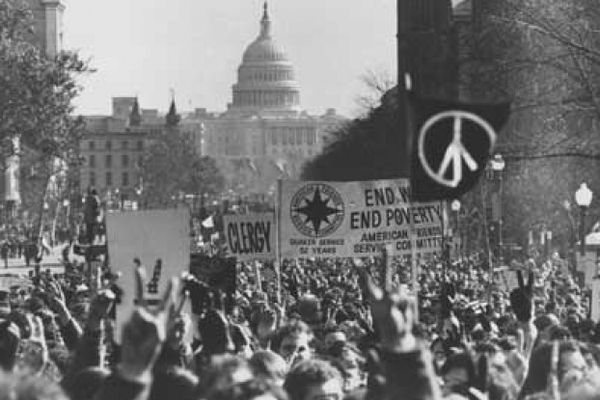For some of us, joining in with a crowd of strangers to dance in sync to a Lady Gaga song is relegated to our biweekly Jazzercise class. And while many of us are happy to keep our spastic limbs private, flash mobs -- groups of people who gather spontaneously in a public space and perform a coordinated dance or action -- thrill unwitting onlookers with their efforts.
Of course, the meet-up and the performances are entirely coordinated and often rehearsed. It's hard to believe that an activity that so clearly separates those "in the know" from the clueless public was actually invented to make fun of hipsters.
Advertisement
We'll explore here how large groups of people descending upon bewildered onlookers could be seen as sticking it to our "scenester" friends, and we'll also tackle how this 21-century pastime has morphed into entertainment, protest, education and -- where all hipster trends go to die -- advertising.
Bill Wasik, an editor at Harper's magazine and the "inventor" of the flash mob, simply called his project, which he began in May 2003, "MOB." (The term "flash mob" was coined after the fact, by a blogger.) Wasik e-mailed the instructions for the first meet-up from an anonymous account, sending it to what he calls a "fairly representative cross section of hipsters" [source: Wasik].
Why, exactly, would Wasik do such a thing? In his words, "seeing how all culture in New York was demonstrably commingled with scenesterism … it should theoretically be possible to create an art project consisting of pure scene -- meaning the scene would be the entire point of the work, and indeed would itself constitute the work." In other words, would hipsters just show up because hipsters were showing up? [source: Wasik].
The first successful flash mob took place in June 2003, when two hundred people flooded a Macy's in Manhattan and asked the salespeople for help finding a "love rug" for their commune, only to disperse quickly after ten minutes.
Media coverage of the mob moved quickly, as did the flash mobs themselves. The next mob organized by Wasik took place only 15 days later, with international coverage. Five more mobs organized by Wasik took place before September 2003, to which hundreds of mobbers showed up. Wasik had succeeded, it seemed, in creating a scene for scene's sake.
But while Wasik's winking invention proved his point, next we'll check out ways that flash mobs have gone from making fun of pop culture to mirroring it.
Advertisement



